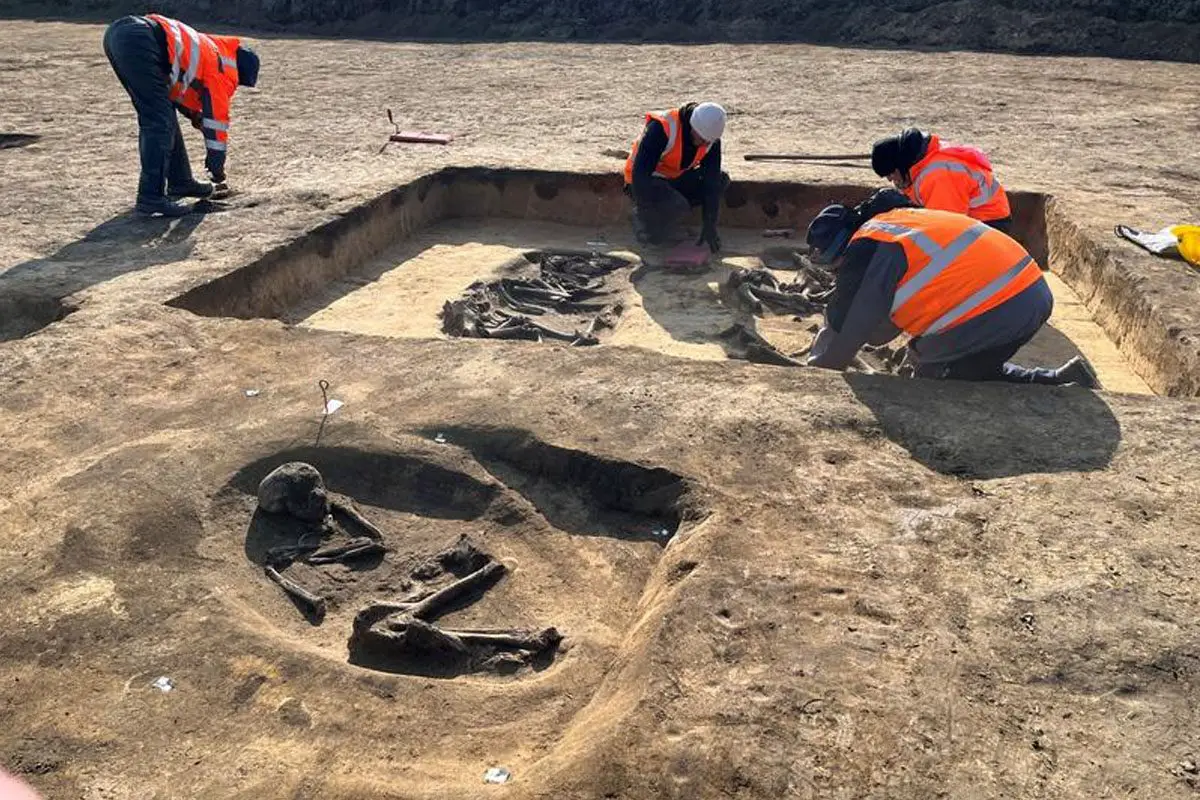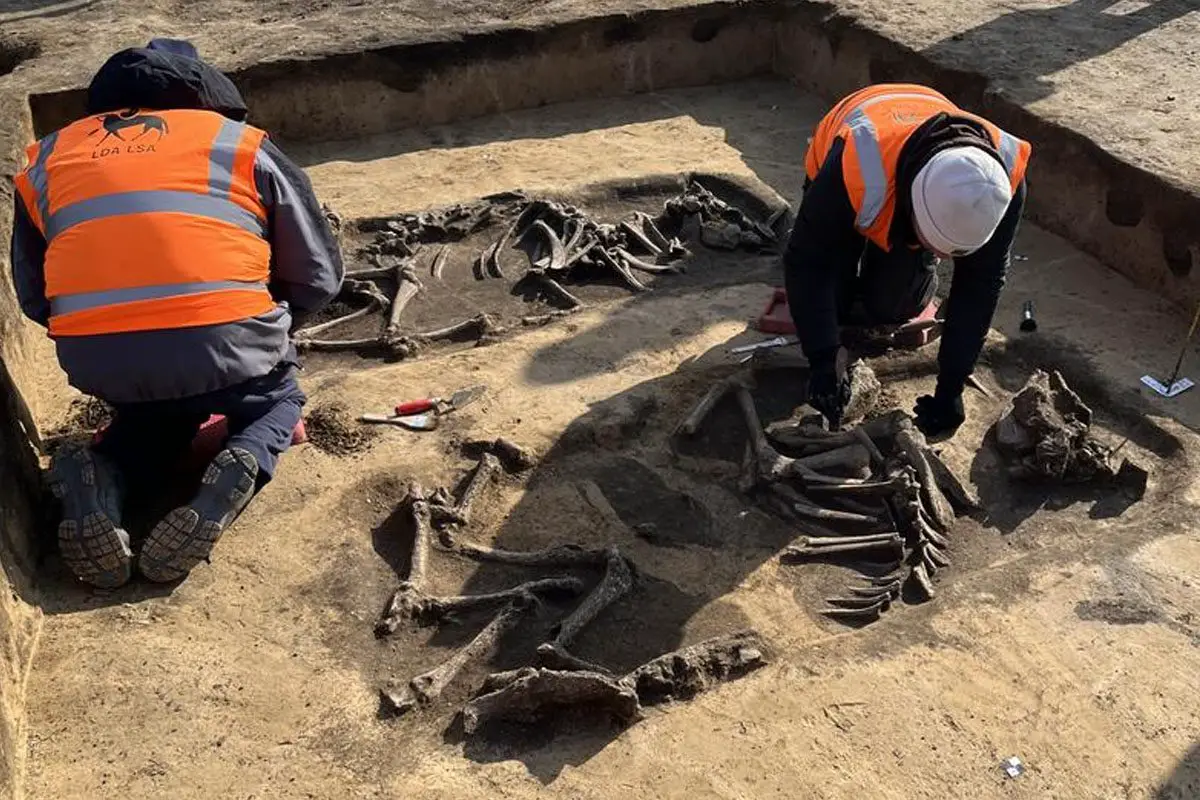Archaeologists from the State Office for Heritage Management and Archaeology Saxony-Anhalt (LDA) have uncovered a burial landscape from the Neolithic period on the Eulenberg near Magdeburg, Germany.
Excavations have revealed two 6,000-year-old mounds from the Baalberge Group (4100–3600 BC), a late Neolithic culture that inhabited Central Germany and Bohemia.
According to a statement by the LDA, the mounds were constructed on top of wooden grave chambers where the archaeologists have found several burials. Both chambers are trapezoidal in shape, measuring from between 20 and 30 metres in length.
Almost a millennia later, the area in between the mounds was used as a processional route for sacrifices and burials by people from the Globular Amphora Culture (GAC).
These later people constructed a 50 cm wide palisade ditch between the mounds to demarcate the processional route which passed over several cattle burials.
The GAC had a tradition of using animal parts (such as a pig’s jaw) or even whole animals as grave offerings, with other examples of entire cattle burials found at other GAC sites across Central Europe.

Speaking to HeritageDaily, a representative of LDA said: “Along this path, pairs of young, 2-3 year old cattle were sacrificed and buried. In one case, the grave of a 35 to 40 year old man was dug in front the cattle burials, creating the image of a cart with a driver or a plough pulled by cattle.”
In the vicinity, archaeologists also found several Corded Ware Culture burial mounds that date from around 2800-2050 BC. The Corded Ware culture was a late Neolithic and early Copper Age people that is considered to be a likely vector for the spread of many of the Indo-European languages in Europe and Asia.
According to the researchers, the archaeological evidence indicates that the landscape remained an important ceremonial centre for prehistoric people over a long period of time.
Header Image Credit : LDA
Sources : State Office for Heritage Management and Archaeology Saxony-Anhalt (LDA) – Archaeologists discover a Neolithic burial landscape on the Eulenberg near Magdeburg.





